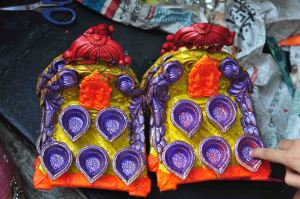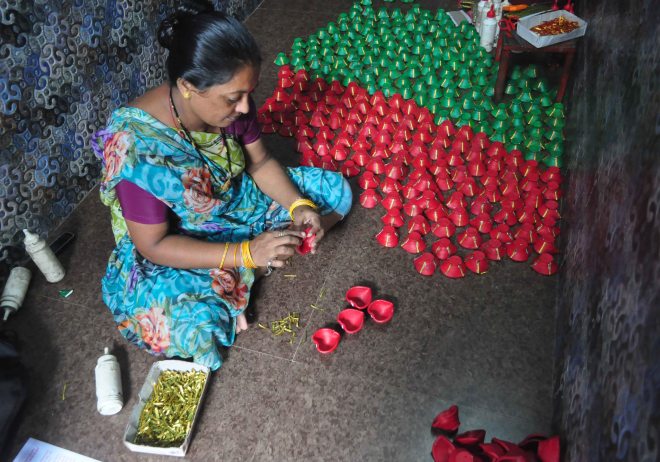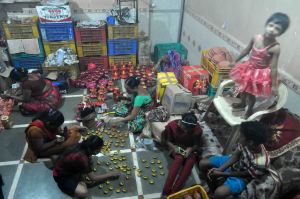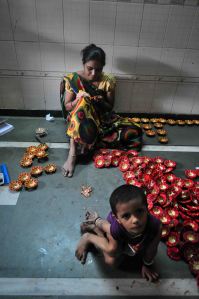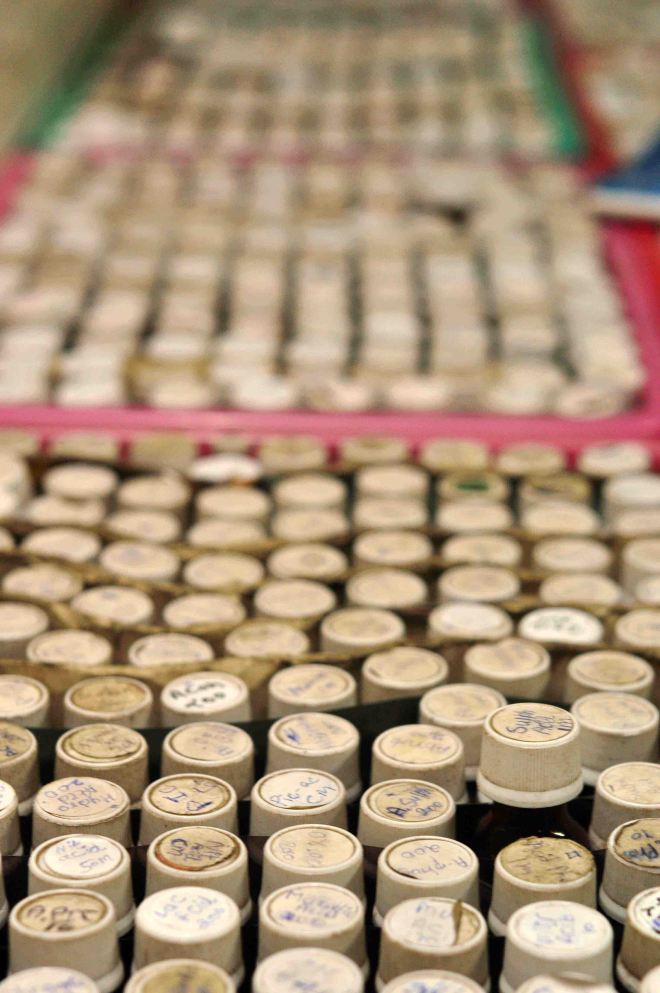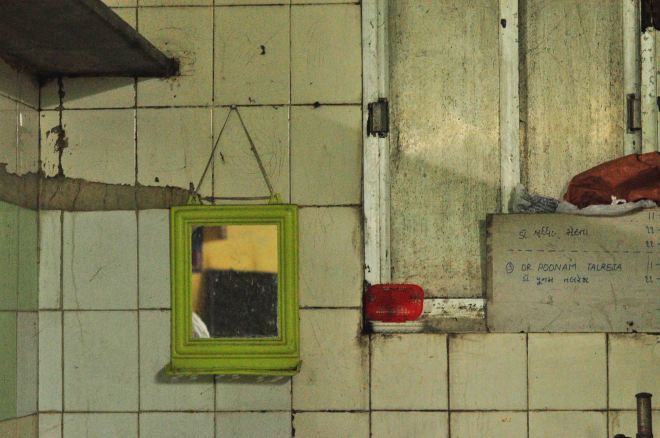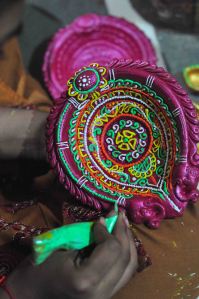 It is the busiest season of the year in Kumbharwada, the settlement of potters in Dharavi. Women repeatedly dip diyas into red paint, older women have small stalls on 90 Feet Road and have no time for wasteful chit-chat, perspiring men have heated telephonic arguments about diya orders, and broken pieces of earthenware are scattered across the lanes: it’s business and busy-ness. As in the rest of the city, Diwali arrangements are in full swing, and preparation for Kumbharwada families means not just shopping, but also selling. For the three months leading up to Diwali, families are immersed in the household business of making earthenware - from diyas to idols - for local markets and for export.
It is the busiest season of the year in Kumbharwada, the settlement of potters in Dharavi. Women repeatedly dip diyas into red paint, older women have small stalls on 90 Feet Road and have no time for wasteful chit-chat, perspiring men have heated telephonic arguments about diya orders, and broken pieces of earthenware are scattered across the lanes: it’s business and busy-ness. As in the rest of the city, Diwali arrangements are in full swing, and preparation for Kumbharwada families means not just shopping, but also selling. For the three months leading up to Diwali, families are immersed in the household business of making earthenware - from diyas to idols - for local markets and for export.
It is the busiest season of the year in Kumbharwada, the settlement of potters in Dharavi. Women repeatedly dip diyas into red paint, older women have small stalls on 90 Feet Road and have no time for wasteful chit-chat, perspiring men have heated telephonic arguments about diya orders, and broken pieces of earthenware are scattered across the lanes: it’s business and busy-ness. As in the rest of the city, Diwali arrangements are in full swing, and preparation for Kumbharwada families means not just shopping, but also selling. For the three months leading up to Diwali, families are immersed in the household business of making earthenware - from diyas to idols - for local markets and for export.
For those who lack the nimble movements required for mehendi designing, painting diyas is a useful business. Bhanu Devanand Tak, a 40-year-old mother of two, paints pots and about a hundred diyas every day between household chores. She started painting diyas a few years after her marriage and, ten Diwalis later, Bhanu figures she must have painted more than 2 lakh to date. “Earlier, I was only painting diyas and a hundred diyas fetched me Rs. 10. Now I have picked up some decoration techniques as well and that helps me earn twenty bucks more,” she says. The money she earns doing this every year, around Rs. 15,000, is used for buying Diwali sweets and dresses for her children.
While the earnings from such voluminous orders of diyas seem small, homemakers like Bhanu are undeterred. She says, “My whole day is spent this way. I don’t need to go anywhere to find work and I can manage the household as well. Besides, this keeps me occupied and I don’t indulge in useless neighbourhood gossip this way.” She gives the example of her mother, who makes a living making festival sweets such as puranpoli and rotis for customers on regular days. As an aside, Bhanu adds that she would like to do “something else someday” when her children get jobs of their own.
Much like Bhanu, a stern old timer called Veni Behn also picked up diya decoration skills from her mother-in-law after she got married. Her family lives in the upper story of the house and the ground floor has been converted into something like a production unit, with wrapping paper, paints and a variety of colourful earthenware strewn around. A bunch of women, including Veni’s daughter-in-law, have their noses buried in their work. Veni’s son Jitendra Valji comes downstairs to investigate the progress they have made and seems pleased. Veni says that women are more talented when it comes to diya decorations. Her son adds that this is a family business in which everyone has a part of play. He runs a store in Thane and complains that the festive earthenware market has been affected by the “Made in China” label found on serial lights and wax candles.
But the festival of lights is also the bringer of smoke to Kumbharwada. Given the nature of the work, most houses have an accompanying kiln and a water-filled clay-pit. This might be a poetic meeting of the elements, but the kilns burn avidly to produce huge quantities of diyas for Diwali. Doors open onto fumes and most women decorate Diwali wares in the midst of a grey haze.
Hawa Toya, a jolly 60-year-old, is among the Muslim potters who also make diyas for Diwali. She lives in Kutch and is visiting her sons in Kumbharwada. “Over there, we have kilns under the earth, and it is so hot that just a match is enough to light up an entire kiln. We use acacia branches as fuel, unlike the hazardous industrial waste that is used in Kumbharwada. It is less polluting,” she says.
Nevertheless, most Kumbharwada residents are fiercely protective of their smoke-ridden locality, especially in the wake of the redevelopment proposal. Instead of looking at the respiratory and eye problems brought about by the smoke, they prefer to see their glass as half-full. One woman points out that the smoke rids the area of mosquitoes, which could have been prevalent in the clay pits. She says, “This smoke is our livelihood. How can we blame the kilns?”



